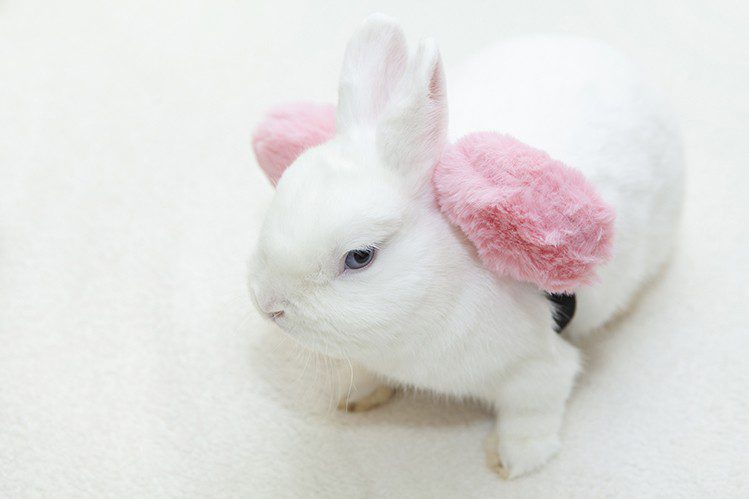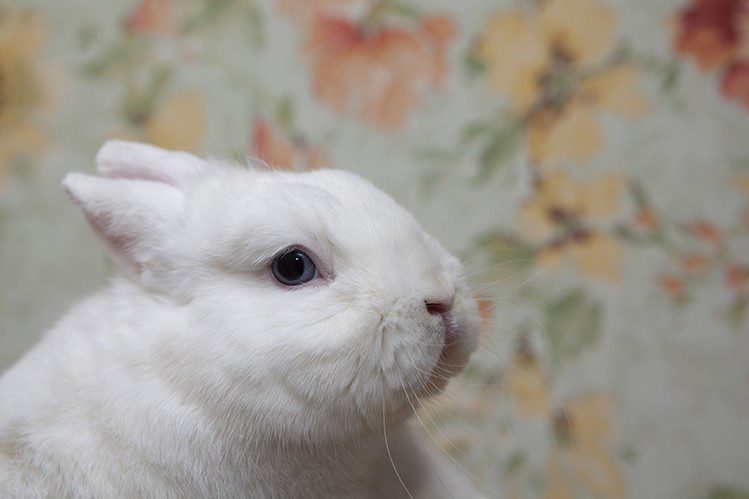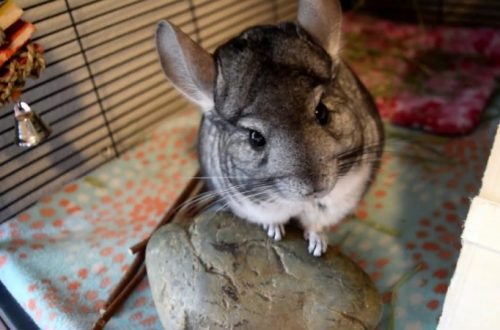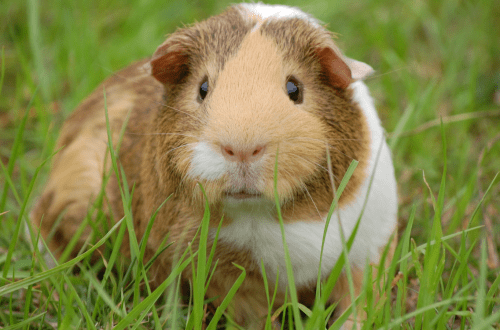
Germelin – decorative rabbit
Germelin is a miniature and very beautiful breed of rabbits, suitable for keeping in an apartment. We will tell you about how hermelins look, how to contain them and the history of their origin in this article.
Appearance
The business card of the Hermelin breed is an exceptionally white coat color, short pointed ears, a round muzzle and blue or red eyes.
The rabbit’s coat is short and dense. The presence of any stains is a marriage. Hermelin nails are always colorless, the tail is small and close to the back.
According to the standard, the ears of the animal should not be longer than 5,5 cm. The permissible length is up to 7 cm. The ears are vertical and close to each other, wide at the base and tapering towards the ends.
Hermelin’s head is round and large, the muzzle is flattened. The body is also large and stocky, the neck is not pronounced. The females have no dewlap. The front legs are small and neat, the hind legs are long, strong and strong.
The weight of an adult rabbit is 1-1,3 kg. A weight of 800 grams is permissible, if it is lower, the animal is rejected, as well as if the weight exceeds 1,5 kg.

Content Behavior and Features
Germelin has a soft and friendly character. However, females are more curious, active and mindful of themselves. Males are more calm.
The Hermelin rabbit quickly becomes attached to a person, allows himself to be picked up and reciprocates the affection. But this is provided that from early childhood the baby was in contact with a person. Otherwise, the pet will grow up withdrawn and shy, like any other unsocialized animal.
Snow-white ears are accustomed to the tray very quickly, so the owner of hermelin will not have problems with cleanliness in the house.
Some owners are enthusiastic about training hermelins and teach them simple commands fairly quickly.
As for the content: Hermelin should live exclusively at home. No outdoor enclosures, flocks, etc., because hermelin is a decorative animal that needs good conditions and comfort.
The hermelin cage should be spacious: at least 50x40x50 cm for a small pet and twice as much for an adult. In the cage, it is necessary to provide 3 zones: shelter, kitchen and toilet. Be sure to set up a house where the rabbit can hide when frightened or just to relax.
It is good if the cage has a retractable tray that will be convenient to clean and clean. It is necessary to clean at least once every 2-3 days, and preferably daily. If this case is abandoned, an unpleasant smell will appear. If there is no pallet in the cage, then pay attention to the toilets for rodents. As a rule, they are angular, do not take up much space, and rabbits quickly learn to use them. The fact is that the rabbit himself chooses a place for the toilet in the cage and goes there.
When choosing wood filler, look for a fine, thin, hypoallergenic fraction. For example, from aspen, specially created for rodents. By the way, for fluffy babies, there are even fillers with carrot chips in the composition! If your choice is sawdust, then choose a large fraction.
It is important to give the rabbit the opportunity to walk around the apartment every day to stretch their paws. You can do this in the evening, while you clean the cage, 1-2 hours is enough. At this time of day, rabbits are especially active and playful.
During games, be careful – rabbits are very fragile and tender, one careless movement is enough to injure the animal.
Keep your pet’s cage away from heaters, direct sunlight and drafts. Make sure that the rabbit always has clean water in a drinking bowl and fresh hay.
If you are putting several rabbits together, do not put them in the same cage – they can fight and will be stressed by the inability to avoid the company of an opponent. An exception is if the hermelins are very friendly and have never offended each other. Usually, females from the same litter get along well, but males are at enmity.
Lifespan
The average life expectancy of a Hermelin rabbit is about 7 years. But if the eared will be in good conditions and will eat quality food, his life will increase by another 2-3 years.
Also, the life span depends on castration and sterilization: hormonal surges wear out the body, which is why the pet may live less. This issue can be resolved in the veterinarian’s office.

History
Germelins were bred by German breeders in the 20s of the last century. They took as a basis the Polish red-eyed rabbits, which appeared in the XNUMXth century.
The breeders had one goal – to produce rabbits with a cute toy appearance that would be in demand.
Hermelins appeared in Russia relatively recently, in 1998 at one of the capital’s exhibitions. For their white color, germelins are also called “ermine rabbits” or “Polish”.
Hermelins are now popular all over the world. To this day, this is the smallest breed of decorative rabbits.





